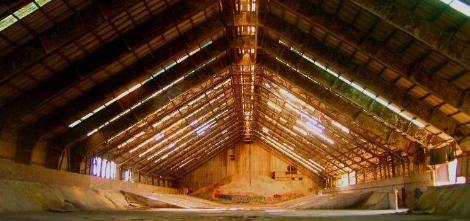UrbanVitaliz: the public service that supports the regeneration of your brownfield sites
September 2023
Many small local authorities find it difficult or don’t know where to start when it comes to revitalising their brownfield sites. That’s why UrbanVitaliz has been set up: this free digital service helps local authorities with their plans to regenerate derelict land.

Brownfield redevelopment: a major challenge for local authorities
The aim is to combat the loss of agricultural land and biodiversity, the sealing off of soils and therefore the preservation of water resources, the contribution to global warming and the alteration of carbon capture capacities. In addition, artificialisation is accompanied by urban sprawl, with the need to develop networks and with the constraints of distance from services, which very often results in additional consumption of carbon energy linked to travel needs and infrastructure development.
Using land that has already been built on to develop development and construction projects, which are also necessary, must therefore be a priority. From this point of view, brownfield sites represent an excellent potential source of land that has already been developed for new projects, especially as the volumes involved are considerable. It is estimated that 6,500 brownfield sites, spread across the country, are being rehabilitated by local authorities, even though these operations are complex and costly due to the need to restore them, often involving demolition and decontamination.
That’s why, since the French Recovery Plan, the Government has set up the « brownfield fund », for the period 2021-2022, which has been made permanent as part of the Green Fund in 2023. This funding will be used to finance the deficits on these operations.
In France, between 20,000 and 30,000 hectares are artificialised every year.
A lack of engineering skills at local level
Not all local authority councillors and technicians are specialists in brownfield sites, and they are faced with many questions: where to start, what’s the next step? What funding is available for my project? Which public or private players can help me, and what services can they provide? What tools can help me?
These are all questions that Urbanvitaliz aims to answer.
Many local public-sector players working on brownfield sites complain of a lack of visibility for regional brownfield projects, difficulty in monitoring them over time and the challenge of coordinating several players.
Cerema, which specialises in analysing land and development strategies, has identified a number of other issues that are holding back the conversion of brownfield sites for local authorities. These include the difficulty of accurately identifying brownfield sites and the administrative complexity of redevelopment projects, which necessarily involve a large number of players.
UrbanVitaliz: a public service created to support land recycling
UrbanVitaliz comes into play when a local authority has identified a brownfield site that it would like to see redeveloped, but the project has stalled for a variety of reasons (ownership, funding, methodological doubts, difficulty in identifying the right players, etc.). UrbanVitaliz is a human and digital service that guides local authorities through the process of unblocking their brownfield projects, by pointing them in the right direction: players, tools, funding, pitfalls to avoid, etc. The team’s urban planners work with local players, who can use the platform to help advise the local authority.
UrbanVitaliz helps to set up operations to recycle brownfield sites in areas that are under pressure, but also (and above all!) in sparsely populated areas with a slack land market, where local authority intervention is often necessary due to a lack of attractiveness for private project developers and where the rate of development has historically been the fastest.
A tool for local authorities and other players involved in brownfield recycling projects at local level
Local authorities can use the UrbanVitaliz service to remove the obstacles to recycling their derelict land, i.e. any space that has been urbanised and has lost its use, and which cannot be renewed on its own: abandoned homes, old factories, unused commercial spaces, etc. The revitalisation sought can also be of several kinds: public facilities, housing, economic activity or even renaturation.
UrbanVitaliz enables local authorities to :
-
Have an identified contact
-
Move forward methodically
-
Know what to do to revitalise their brownfield sites.
All they need to do is follow these three key steps:
-
The local authority applies for help to revitalise a brownfield site by submitting an application on the urbanvitaliz.fr website.
-
The advisory team, made up of urban planners, talks to the local authority to clarify its needs
-
The local authority receives personalised recommendations to move its project forward
The tool is also aimed at DDT(M) regional delegates and other local players involved in the issue of brownfield sites (public land establishments, DREAL, Cerema, etc.). All they need to do is request access to the resources at friches@beta.gouv.fr :
-
Access the department’s brownfield files
-
Be notified of new projects by local authorities seeking advice
-
Interact with UrbanVitaliz planners to help local authorities bring their projects to fruition
-
Share files with their colleagues
The platform is increasingly used and appreciated: since its inception, 290 brownfield projects have been monitored, with a 70% rate of action taken by local authorities following the advice received.